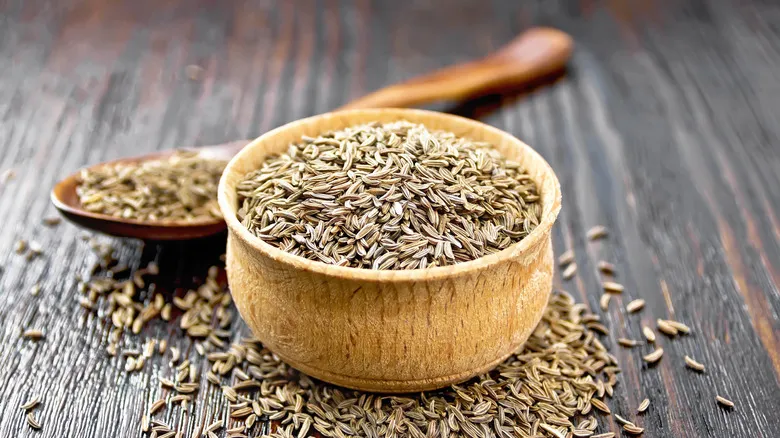What is cumin?
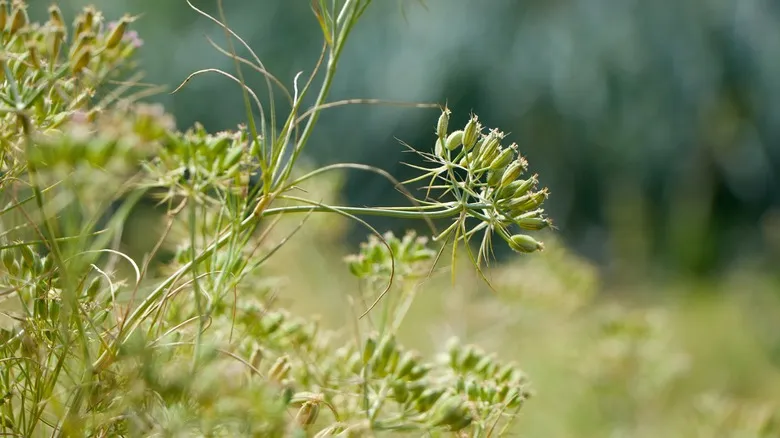
Cumin (Cuminum cyminum) is a soft, almost weedy plant characterized by its green stems, feathery leaves, and white flowers. It belongs to the parsley family and is related to herbs such as dill, caraway, fennel, and cilantro. Like these herbs, cumin is an annual plant that resembles them in garden settings. Its relatives also include celery, celeriac, parsnips, and carrots.
Similar to these herbs, cumin is indigenous to the Mediterranean region and Iran, where it has been utilized in cooking for thousands of years. Today, it continues to be cultivated in these areas, as well as in India, China, Mexico, and various parts of Asia. Due to its high drought resistance, cumin can sometimes be found growing wild in certain regions of Europe and Asia, but caution is advised in identifying the plant, as it is related to the toxic poison hemlock.
Cumin seeds are elongated and light brown, resembling fennel and anise seeds, although they are darker than the lighter yellow-green of those seeds. Additionally, cumin seeds are smaller in size. They can be consumed whole when cooked or, more commonly in various cuisines, ground into a spice powder. The spice is usually harvested by hand.
The ancient history of cumin cultivation and use

The history of cumin is remarkably ancient, with its introduction tracing back to the very beginnings of recorded history. The term "cumin" is derived from its Sumerian predecessor, "gamun," which was first documented in cuneiform around 4,000 years ago. Archaeologists have unearthed seeds in Syria that date back to nearly the same period, during the second millennium BCE, as well as in the tomb of the renowned pharaoh Tutankhamun.
Although the term may refer to either common or black cumin in these early texts, it is evident that this spice was a staple in the ancient cultures of Europe, Africa, and Asia. It is mentioned in the Bible, including in the books of Isaiah (Hebrew Bible) and Matthew (New Testament). In ancient Egypt, cumin was utilized in burial rituals and even as a form of tax payment. It was widely cultivated and consumed by ancient Indians, Greeks, and Romans, traded extensively, and brought to the Americas by the Spanish and Portuguese. Today, cumin has become an integral part of various culinary traditions around the world, from Latin America to the Caribbean and back to its regions of origin.
Varieties of cumin

The reality is that differentiating between the various types of cumin can be quite challenging, particularly due to the often unclear information found online and in spice shops. The most prevalent variety, Cuminum cyminum, is typically a brownish-yellow color and is the one you’re most likely to encounter in grocery stores, either as whole seeds or in ground form.
Some references suggest the existence of green and white varieties, but they fail to provide the botanical names for these types. A thorough search online reveals that these may simply be alternative names for the same cumin variety, possibly reflecting linguistic variations or translations, or they might refer to similar seeds from other plants (like dill and anise) that share a comparable shape.
There are indeed less common and botanically distinct types of cumin, such as black cumin (Nigella sativa), also known as black seed or black caraway, which belongs to the Ranunculaceae family. These seeds are cultivated in specific areas, like the Hindu Kush region of Afghanistan. Although their flavor profiles are somewhat similar, black cumin tends to be milder, with more herbal and onion-like notes, and a slight bitterness.
Cumin can be found in whole seed form, as a ground powder, or as an essential oil. The choice of which to use will depend on your recipe and availability, as essential oils are unlikely to be found in your local grocery store.
The flavor of cumin
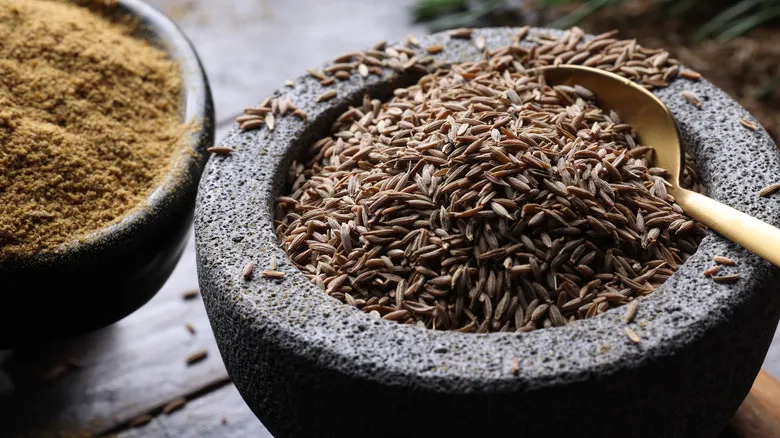
The specific taste of cumin can vary based on several factors. These include the type of cumin, the place of purchase, the cultivation and harvesting methods, the drying process, the form in which it is sold, its age, the recipe it’s used in, and the other flavors it’s paired with. Therefore, similar to any other spice or ingredient, pinpointing the precise flavor of cumin is quite challenging.
Generally speaking, cumin has a warm, earthy profile, reminiscent of spices without being overtly hot. It possesses a strong, savory essence with a hint of bitterness and a slight nuttiness. These characteristics make it an excellent choice for enhancing the flavors of meats, stews, breads, and more. However, cumin's robust flavor can easily dominate other tastes, so it’s important to use it judiciously. To prevent overpowering your dish, opt for toasted cumin, grind it fresh if possible, and incorporate it gradually.
To maximize the flavor of cumin seeds, whether you choose to grind them or not, toasting is essential. While many pre-ground cumin options are already toasted, it’s wise to check the label for confirmation. For this reason, many chefs prefer to use jeera powder (toasted cumin powder).
How to choose the best spices
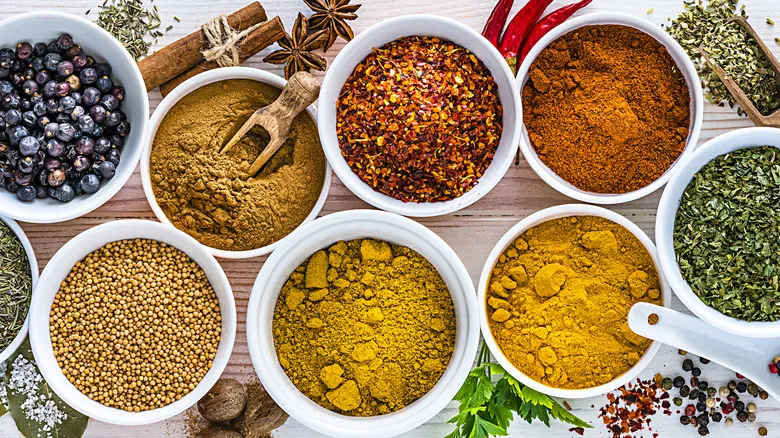
The finest spices are those that are fresh, straightforward, and uncomplicated. Freshly ground cumin emits a sweet, vibrant aroma and flavor, making seeds the superior option if available. Unfortunately, ground spices tend to lose their potency and become stale much more quickly than whole spices. It's advisable not to keep ground spices for more than three months, while whole spices can last at least twice as long.
For this reason, purchasing whole cumin seeds and grinding them yourself is often more economical. You can typically find them in grocery stores, but if they're not available, there are numerous online retailers that offer them. When buying cumin seeds in-store, be sure to check the label carefully, as they closely resemble caraway seeds, and both start with the letter C!
Another advantage of whole cumin is that it doesn't always need to be ground. Whole seeds will soften and break down when cooked in curries, stews, or dal, allowing you to add them early in the cooking process without the need for grinding. Since spices are usually packaged in bags or jars, finding high-quality options isn't too difficult. Just ensure that the supplier is reputable, especially if you're shopping online.
How to grind your own cumin seeds
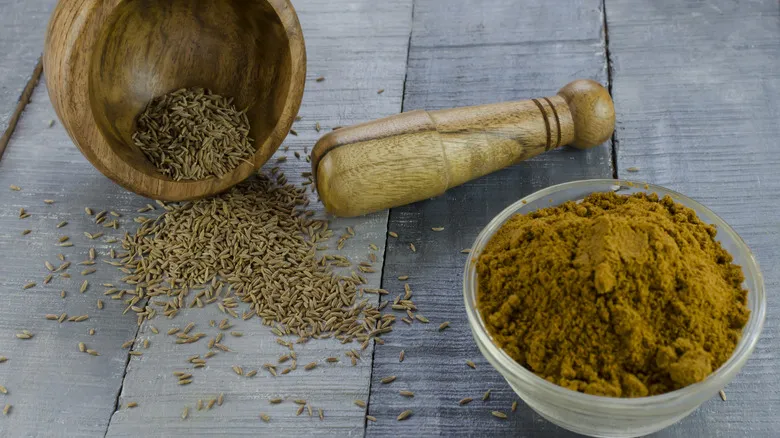
Can you grind your own cumin? Absolutely! Many chefs believe this is the best way to enjoy it, as the freshly ground powder is more aromatic and flavorful than anything that has been stored in a jar for months (or even years). Consider the difference between a freshly grated nutmeg and the cinnamon you purchase pre-ground. If you haven't tried using whole spices versus ground ones, cumin is an excellent place to begin.
You can easily grind cumin seeds at home using a mortar and pestle, spice grinder, food processor, blender, or even a coffee grinder. In a spice grinder, raw seeds will transform into a fine powder in about 30-40 seconds. If you want to create roasted cumin powder, also known as jeera powder, you'll need to dry roast the seeds on the stovetop first. Stir them for about five minutes, then remove from heat and continue stirring for another two minutes to prevent burning. Once they have cooled completely, you can grind them.
Keep in mind that you cannot substitute seeds and powder in a 1:1 ratio. Instead, use a general ratio of 4:3 for seeds to ground cumin. The reason for this is that whole spices occupy less space, leaving air pockets between them, while ground spices are denser and more concentrated in flavor. This difference is less significant for smaller seeds like cumin and caraway compared to larger ones like coriander. Depending on your taste preferences, you might want to adjust closer to a 1:1 ratio for your cumin.
Common uses for cumin in the kitchen

Cumin is fantastic for enhancing the flavor of grilled meats, oven-roasted dishes, and soups and stews. It shines in curries, falafel, kebabs, burgers, and much more. Additionally, it pairs wonderfully with vegetables, grains, bread, and even fried eggs. Many chefs consider cumin a staple in Tex-Mex cuisine. While it may not be a key ingredient in hummus, it certainly makes a delightful addition.
Cumin can also be used to infuse oil, which can then add a kick to rice, vegetables, or lentils. To do this, heat seeds in hot oil until they bloom—this means cooking them in high-smoke point oil until they crack and pop, releasing their flavors. Once you catch the aroma of toasted cumin seeds and they have a nice golden color, you’re ready. You can then drizzle the infused oil and seeds over your dish for added flavor. Just be cautious, as burnt spices can ruin a dish. If that happens, which is common for many home cooks, simply start over.
The one area where cumin struggles is in desserts. While there are exceptions, like apple pie with a cumin glaze, it is primarily a savory spice.
Substitutes for cumin
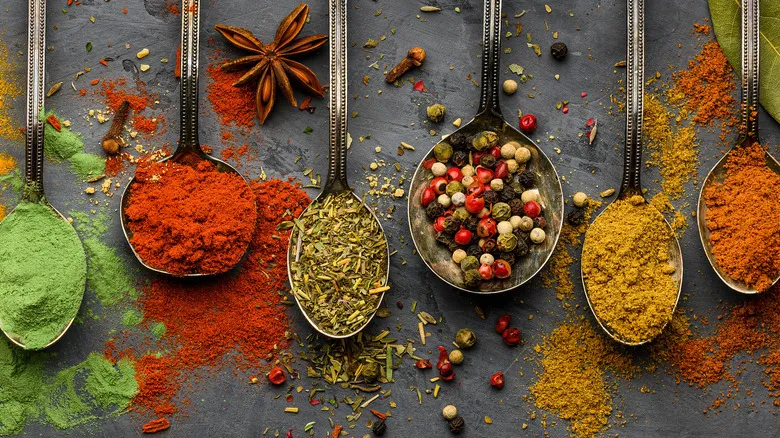
The top alternatives for cumin can be categorized into two types: either closely related spices or spice blends that contain cumin. Direct substitutes include seeds from other plants in the parsley family, such as coriander (the seed form of cilantro), caraway, dill, or fennel. However, you shouldn't use these in a 1:1 ratio; it's best to research the appropriate substitution ratio online. For example, when replacing cumin with coriander, you should only use half the amount.
Spice blends that replicate cumin's warmth and earthiness can also be effective. There are many spice mixes that feature cumin, with some of the most popular being taco seasoning, curry powder, garam masala, and chili powder. Other less conventional options like nutmeg, allspice, or celery seeds can add complexity to your dish, even if they won't replicate the exact flavor of cumin.
When making substitutions, it's important to start with a small amount. You can always increase the quantity of your chosen substitute later, but correcting a dish that has too much nutmeg when it wasn't intended can be quite challenging—unless you happen to be a witch, which is unlikely. After finding the right substitution ratio, proceed with caution when adding your alternative.
Homemade cumin spice mixtures
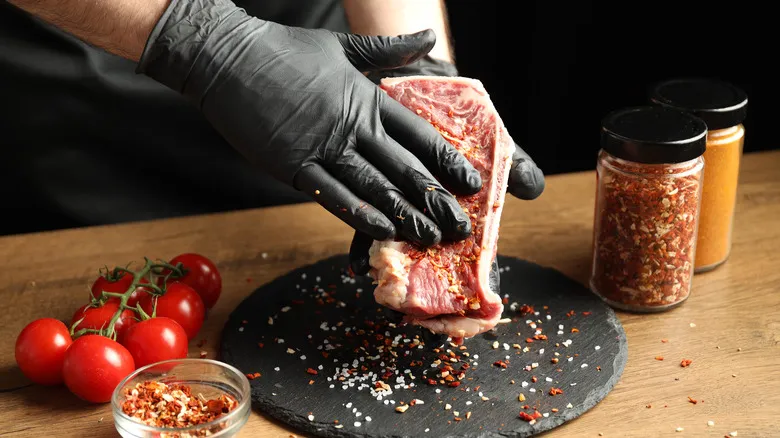
Cumin is an exceptional spice that complements a variety of homemade spice blends. It pairs well with flavors such as thyme, cinnamon, turmeric, red pepper, and oregano, among others. The choice of what to mix it with will depend on the type of cuisine you are preparing.
For example, chili powder recipes typically include paprika, oregano, garlic powder, onion powder, and cayenne, along with cumin. This combination is ideal for dishes like chili, tacos, and other Tex-Mex-inspired meals. In Middle Eastern cuisine, baharat features a blend of coriander, nutmeg, cinnamon, cardamom, cloves, paprika, and cumin. Another Middle Eastern blend, za'atar, consists of sumac, sesame, thyme or oregano, and cumin, along with other possible flavors. Both of these Middle Eastern spice mixes are fantastic for enhancing the taste of meat, fish, and vegetables.
If you prefer not to use specific spice blends but still want to explore the flavor of cumin, consider incorporating it into a dry rub for steak. You can mix it with various herbs, peppers, salt, and sugar to create a combination that best suits your palate.
Growing your own cumin
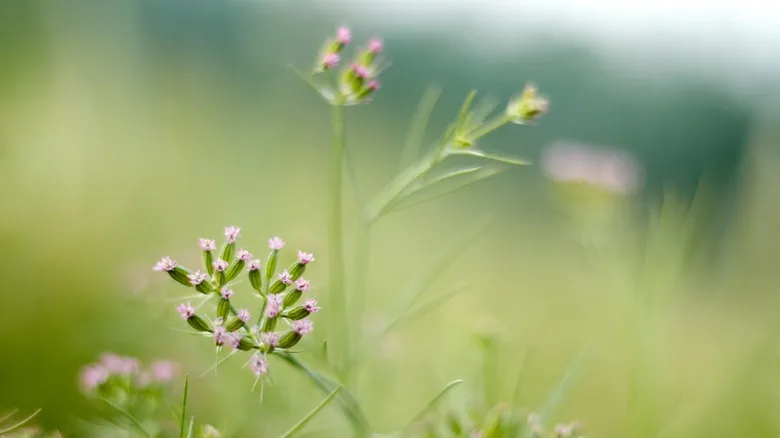
Cumin is relatively simple to cultivate. Similar to its relatives such as parsley, dill, fennel, and cilantro, it is an annual plant. You can start seeds indoors 8-10 weeks prior to the last frost date and then transplant them into the garden once the frost risk has passed, or you can sow them directly in the ground four weeks after the last frost. Additionally, cumin can be grown indoors in a container at any time throughout the year.
To harvest the seeds, wait until the flowers have bloomed, then hang the plants upside down to dry. Place a container or bag beneath the hanging plants to catch the seeds as they fall, which will happen once they are fully dry. You can use the seeds whole, grind them into a powder, or save them for planting cumin again the following year. Just ensure that the seeds are completely dry before storing them in a container to prevent mold.
Keep in mind that cumin can be somewhat particular. The plants require warm temperatures to thrive and need ample space in the garden, with about 4-6 inches between each plant. Expect a timeframe of 3-5 months from planting to harvesting.
Health benefits of cumin

Common cumin has been utilized in traditional medicine for a long time, particularly for conditions like cancer, diabetes, and high cholesterol. It may aid in digestion, promote urination, alleviate inflammation, reduce muscle spasms, and more. Additionally, it could be beneficial for weight loss.
Black cumin also offers a wide range of health advantages. It supports immune function and reduces inflammation, contributing positively to various bodily systems. Studies indicate that it can act as an antidote to toxins and mitigate the side effects of medications, and it may also have anti-cancer properties similar to those of its common counterpart.
Before incorporating a significant amount of any herb or spice into your diet, it’s essential to consult a doctor or herbalist. Many herbs can have unexpected effects or may interact negatively with certain medications. Furthermore, the specific benefits of black cumin may not be the same as those of common cumin, and a professional can guide you in making the right choices.
Storing cumin to last

Unfortunately, many people are using expired products. While spices don’t spoil in the same dangerous way that tuna can (which could lead to serious illness), they do lose their potency over time. One effective way to extend the shelf life of spices is to purchase whole cumin. Similar to fresh fruits, keeping the natural outer layers intact helps preserve the quality of spices. Since cumin is relatively easy to grind, whether by hand or with a machine, making this switch is quite simple.
In general, cumin is easy to store. For optimal flavor, keep it and other spices in a cool, dry location in an airtight container. A dark cabinet or drawer works best. If you open the jar and don’t detect any aroma, it’s time to replace your cumin if possible. Much of our tasting experience is linked to our sense of smell, so a lack of scent indicates a significant decline in flavor quality. It’s also wise to label your jars with the purchase date to ensure you discard them within their best-by period. For ground spices, this is typically around three months, while whole cumin can last about a year.
Nutritional information
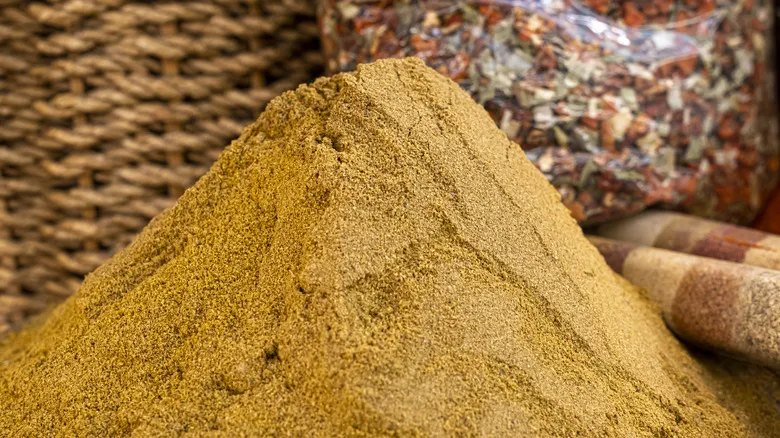
Cumin is a spice that has minimal impact on the calorie content of a dish. A teaspoon of whole cumin seeds contains approximately 8 calories, meaning you would need to use a significant amount to affect your diet. Additionally, it is not a particularly rich source of nutrients. While it does provide essential minerals like calcium, magnesium, phosphorus, and potassium, these are present in small amounts, along with trace levels of various other vitamins and minerals.
Nonetheless, it is important for humans to obtain these trace minerals from a variety of sources, as they play a crucial role in numerous metabolic processes. A deficiency can increase the risk of disease. These minerals are also vital for the healthy development of children, making it beneficial to include a diverse range of spices in their diets. Overall, incorporating cumin into your cooking is a great way to enhance your health. So, consider adding cumin to your meals today!
Recommended

The Canned Tomato Problem You Can Solve With Kitchen Shears

Old Onion Sacks Will Get Your Dishes Cleaner Than Ever

The Last Day You Can Still Use Sour Cream After Opening It

The KitchenAid Attachment That Makes Homemade Bread (Almost) Effortless
Next up

